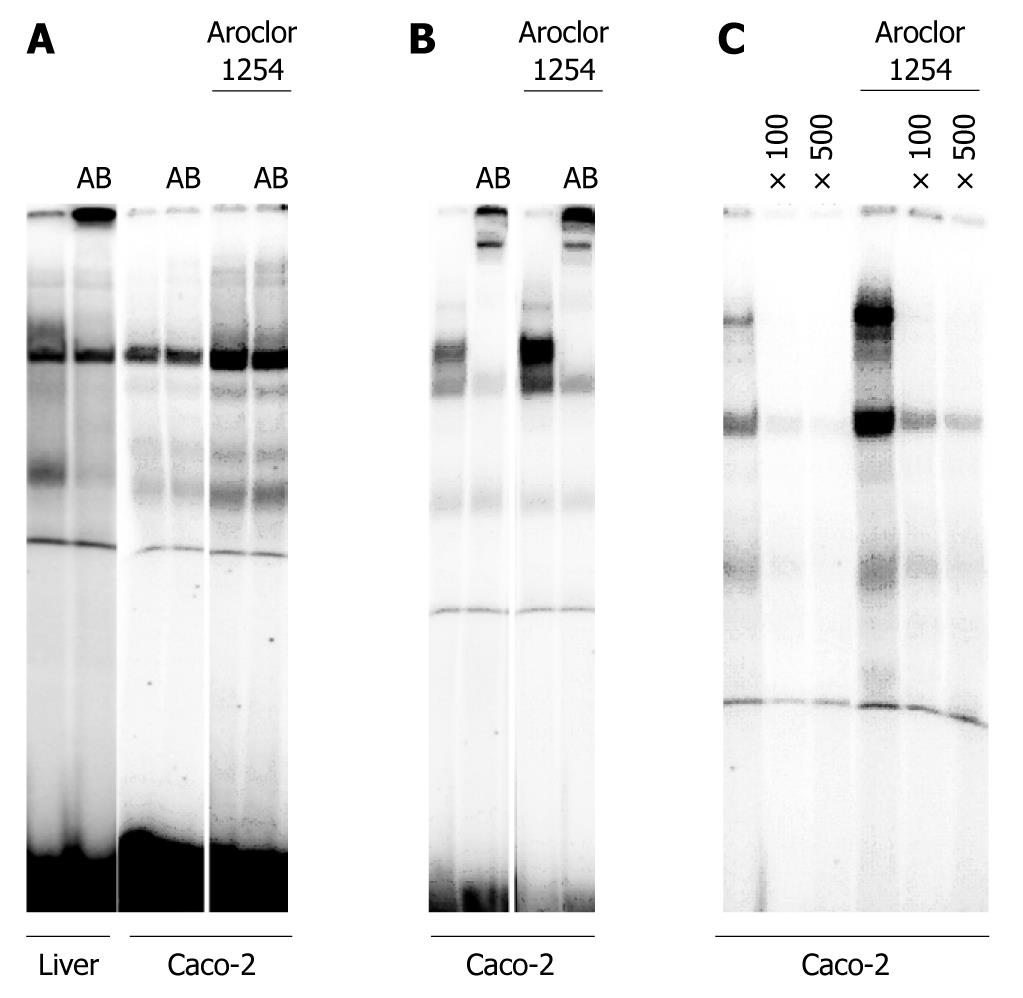Copyright
©2010 Baishideng.
World J Gastroenterol. Aug 21, 2010; 16(31): 3919-3927
Published online Aug 21, 2010. doi: 10.3748/wjg.v16.i31.3919
Published online Aug 21, 2010. doi: 10.3748/wjg.v16.i31.3919
Figure 6 Electromobility shift assay with nuclear extracts of the human colon carcinoma Caco-2 cell line.
A: Demonstrates the DNA binding of HNF6 to an optimized oligonucleotide probe using either nuclear protein extract of human liver tissue or Caco-2 cells. Note, the lane labeled as AB refers to the addition of a hepatocyte nuclear factor 6 antibody to demonstrate specificity of the DNA binding assay; B: Demonstrates the DNA binding of HNF4α to an optimized oligonucleotide probe using either nuclear protein extract of human liver tissue or Caco-2 cells. Note, the lane labeled as AB refers to the addition of a HNF4α antibody to demonstrate specificity of the DNA binding assay; C: Demonstrates the DNA binding of NGN3 (a HNF6 target gene) to an optimized oligonucleotide probe using either nuclear protein extract of human liver tissue or Caco-2 cells. Note, the lane labeled as × 100 or × 500 refers to competition assays with excess of unlabeled probe.
- Citation: Lehner F, Kulik U, Klempnauer J, Borlak J. Mapping of liver-enriched transcription factors in the human intestine. World J Gastroenterol 2010; 16(31): 3919-3927
- URL: https://www.wjgnet.com/1007-9327/full/v16/i31/3919.htm
- DOI: https://dx.doi.org/10.3748/wjg.v16.i31.3919









